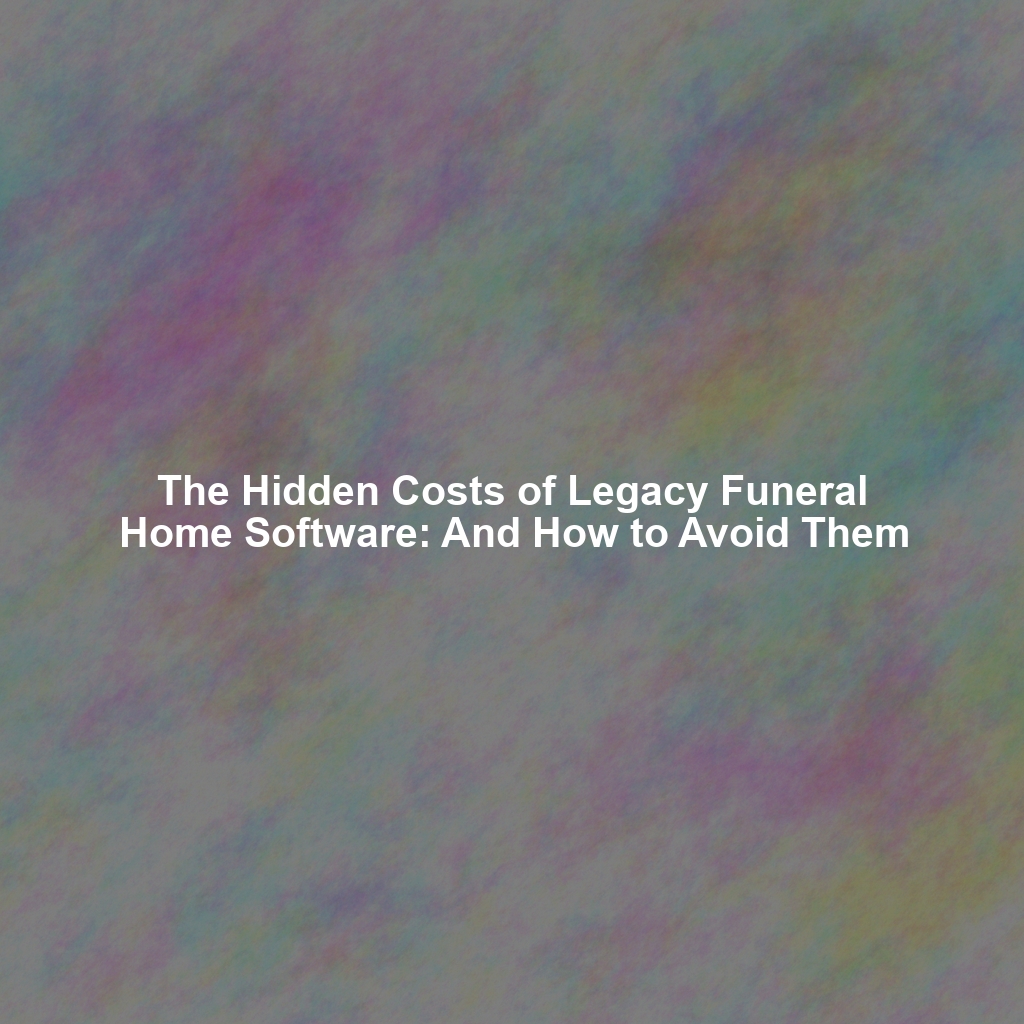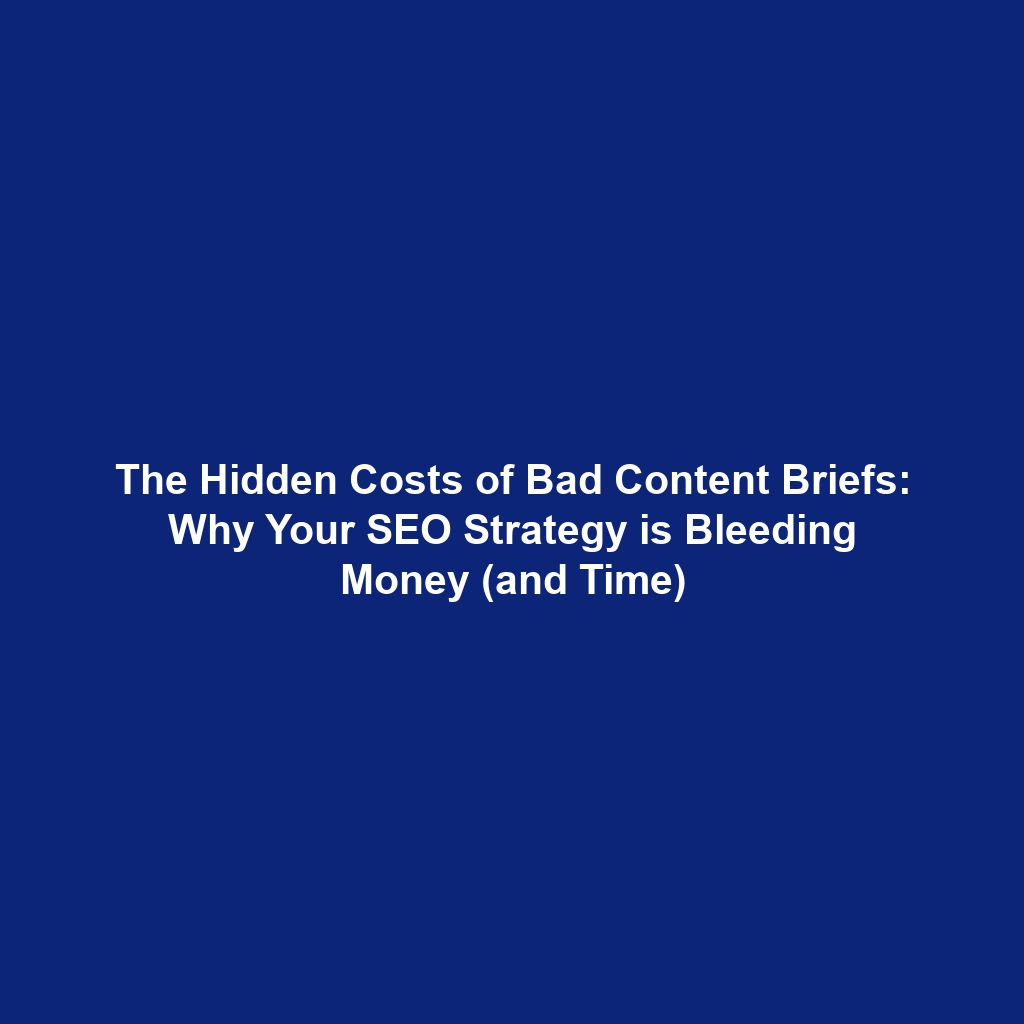The Hidden Costs of Legacy Funeral Home Software: And How to Avoid Them
Running a funeral home is tough. You’re helping families through incredibly difficult times, managing complex logistics, and always striving to provide comfort. The last thing you need is your software making things harder. But for many funeral homes still using older software, that’s exactly what’s happening. You might think, “It’s been working fine for years, why change?” But sticking with what you know could be costing you way more than you think.
We’re not just talking about the initial cost of that software you bought years ago. We’re talking about a whole bunch of hidden costs that are slowly eating into your profits and making your business less efficient. Let’s break down those hidden costs and, more importantly, how you can avoid them.
Common Hidden Costs of Legacy Software
Think of legacy software like an old car. It might still get you where you need to go, but the constant repairs, terrible gas mileage, and overall unreliability really add up. Here’s a look at the hidden costs you’re probably dealing with when using older funeral home software:
1. Exorbitant Maintenance Fees
This is a big one. Legacy software often comes with really expensive maintenance contracts. These contracts promise ongoing support and updates, but you often end up with slow response times and updates that don’t really improve anything. You’re basically paying a lot for a system that’s getting more and more outdated.
Actionable Tip: Take a close look at your maintenance contract. What are you actually getting for your money? Are you happy with the response times? Are the updates actually helping your workflow?
2. Limited Integration Capabilities
Funeral homes today use a variety of online tools, from online obituaries to accounting software. Older systems often struggle to work with these newer technologies. This means you have to manually enter data multiple times, which is a waste of time and increases the chance of errors. Imagine having to type the same information into three different systems – nobody wants that!
Actionable Tip: Make a list of the software you use every day. Does your current system easily work with all of them? If not, you’re losing valuable time and potentially making costly mistakes.
3. Increased Security Risks
Cybersecurity isn’t optional anymore; it’s a must. Older software is more vulnerable to cyber threats. It often lacks the latest security updates and encryption, making your business an easy target for hackers. A data breach can be devastating, both for your finances and your reputation.
Actionable Tip: Get an IT security expert to check your current system for weaknesses. Are your client records safe and protected?
4. Inefficient Workflows and Wasted Time
Legacy software often has complicated interfaces and doesn’t allow for streamlined workflows. This means your staff spends more time trying to figure out the system, completing tasks, and fixing mistakes. This leads to lower productivity and higher labor costs. Time is money, and clunky software is costing you both.
Actionable Tip: Track how much time your staff spends on certain tasks. Are they struggling with the software? Could a more user-friendly system significantly improve their efficiency?
5. Difficulty Finding Trained Staff
New graduates and younger employees are used to modern technology. They might not want to work with outdated systems, making it harder to hire and train new staff. Investing in modern software can make your funeral home more appealing to potential employees.
Actionable Tip: Think about how your software will affect employee morale and recruitment in the future. Is your current system helping or hurting your ability to find and keep talented employees?
Sacred Grounds vs. Legacy Systems
So, what’s the alternative? Modern, affordable deathcare software like Sacred Grounds is designed to fix the problems with legacy systems and give funeral homes a more efficient and cost-effective solution.
Unlike clunky, outdated software, Sacred Grounds is built to be easy to use. It offers an intuitive interface, easy integration with other tools, and strong security features. It’s also designed to be affordable, with pricing options that fit the budgets of all funeral homes. You can find out more about it here.
How Sacred Grounds Saves Money
Here are some specific ways Sacred Grounds can help you avoid those hidden costs and save money:
- Reduced Maintenance Fees: With a modern, cloud-based system, you don’t need to pay for expensive maintenance contracts. Updates and security fixes are automatically applied, so you don’t have to worry about them.
- Improved Integration: Sacred Grounds easily works with popular accounting software, online obituary platforms, and other essential tools, so you don’t have to manually enter data and can improve accuracy.
- Enhanced Security: Sacred Grounds uses the latest security measures to protect your data from cyber threats.
- Streamlined Workflows: The easy-to-use interface and streamlined workflows of Sacred Grounds help your staff complete tasks faster and more efficiently, freeing up their time to focus on what matters most: helping grieving families.
- Attracting and Retaining Talent: Modern software makes your funeral home a more appealing place to work, helping you find and keep top talent.
Making the Switch to a Better Option
Switching software might seem like a big deal, but it doesn’t have to be. Here’s a simple plan to get started:
- Assess Your Needs: Figure out the specific problems you’re having with your current system. What tasks are taking too long? What integrations are missing?
- Explore Your Options: Research different deathcare software solutions and compare their features, pricing, and customer support.
- Request a Demo: Most software companies offer free demos. Take advantage of these to see the software in action and ask questions.
- Plan Your Migration: Work with the software provider to create a plan for moving your data and training your staff.
- Embrace the Change: Be open to learning new workflows and processes. The long-term benefits will be worth the initial effort.
Conclusion
Don’t let older funeral home software hold you back. By understanding the hidden costs and looking into modern alternatives, you can improve your efficiency, reduce your expenses, and provide better service to the families you serve. It’s time to get rid of the old car and upgrade to a solution that will help your business grow. A solution like Sacred Grounds might be exactly what your funeral home needs to succeed.


